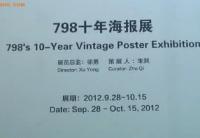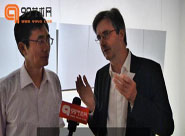[1]本雅明•布赫洛(Benjamin Buchloh),(1941-)美国当代著名批评家,出生于德国,《十月》杂志编辑,哈佛大学梅隆现代艺术教授
[2]高建平先生将avant-garde翻译为“先锋”并无不妥,不过,在视觉艺术话语内,“前卫”一词使用的更为普遍,又因为笔者主要在视觉艺术范围内讨论avant-garde,所以,在此使用“前卫”一词。
[3]彼得•比格尔,《先锋派理论》,高建平译,商务印书馆出版,2005年9月第二版,第221页。
[4]Kazys Varnelis, “The Immediated Now: Network Culture and the Poetics of Reality,”in networked: a (networked_book) about (networked_art), at
[5]Benjamin Buchloh, “Theorizing the Avant-garde ,”Art in America, Vol.72, no. 10 (November 1984), P.19.
[6]Benjamin Buchloh,Neo-Avantgarde and Culture Industry, Cambridge, MA: MIT Press, 2001. P.xvii,xxvii
[7]Christine Mehring, “Buchloh, Benjamin,” Oxford Art Online, 19 Mar. 2012.
[8]Benjamin Buchloh,Gerhard Richter: Painting after the Subject of History, City University of New York, 1994. P135.
[9]豪•福斯特在《新前卫新在何处?》(What’s Neo about the Neo-Avant-Garde?)一文在布赫洛基础上再次讨论了的比格尔的理论。福斯特认为“如果新前卫这一术语要保留的话,必须在新前卫产生之初就把两种不同的运动区分开来:一方是五十年代初劳申伯格(Rauschenberg)和卡布瓦(Kaprow)为代表,另一方以六十年代初的伯恩(Buren)和亚瑟(Asher)为代表……(前者)并没有改变艺术体制,却被体制所体制化了”。既然如此,福斯特依然不同意比格尔的盲目否定,而是努力从另一种新角度去理解他们。详见Hal Foster, “What’s Neo about the Neo-Avant-Garde?” October, Vol. 70, The Duchamp Effect (Authumn, 1994), p.22.
[10]译文在中译本基础上进行了改动,中译本见彼得•比格尔,《先锋派理论》,高建平译,商务印书馆出版,2005年9月第二版,第135页。英译本见Peter Brüger, Theory of the Avant-Garde, Trans. Michael Shaw, Minneapolis, University of Minnesota Press, 1984, P61.
[11]译文在中译本基础上进行了改动,中译本见彼得•比格尔,《先锋派理论》,高建平译,商务印书馆出版,2005年9月第二版,第131页。英译本见Peter Brüger, Theory of the Avant-Garde, Trans. Michael Shaw, Minneapolis, University of Minnesota Press, 1984, P58.
[12]Benjamin Buchloh, “The Primary Color for the Second Time: A Paradigm Repetition of the Neo-Avant-Garde”,October, Vol.37 (Summer, 1986), P.42.
[13]Benjamin Buchloh,Gerhard Richter: Painting after the Subject of History, City University of New York, 1994. P128.
[14]同上,第129页。[15]同上,第130页。[16]同上,第131页。
[17]Benjamin Buchloh,Neo-Avantgarde and Culture Industry, Cambridge, MA: MIT Press, 2001. P.xxiv.
[18]Benjamin Buchloh, “The Primary Color for the Second Time: A Paradigm Repetition of the Neo-Avant-Garde”,October, Vol.37 (Summer, 1986), P.44.
[19]Benjamin Buchloh, “The Primary Color for the Second Time: A Paradigm Repetition of the Neo-Avant-Garde”,October, Vol.37 (Summer, 1986), P.48.
[20]同上第52页。
[21]布赫洛在其博士论文中对李希特进行了详细分析,其中主要区分了李希特单色抽象等看似模仿性的作品与历史前卫的区别,并给与其新的意义。正如他在《新前卫与文化工业》一书前言中写道,“……更为系统的是这些年我对李希特的研究,我集中研究了美学建构记忆经验的能力,它作为极少数的抵抗手段之一在与景观化的总体性作斗争”,参考Benjamin Buchloh,Neo-Avantgarde and Culture Industry, Cambridge, MA: MIT Press, 2001. P.xxv.
[22]Hal Foster, “What’s Neo about the Neo-Avant-Garde?”October, Vol. 70, The Duchamp Effect (Authumn, 1994), p.14.
【编辑:李洪雷】

